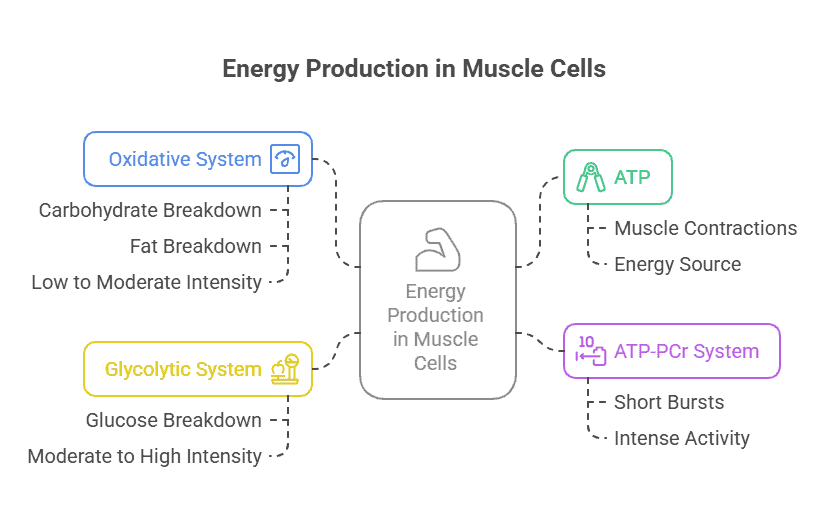When we think about muscles, we often associate them with strength, power, and movement. But have you ever wondered how muscles actually generate the energy they need to contract and function effectively?
ATP: The Energy Currency of Cells
Adenosine triphosphate (ATP) is the primary energy currency in the cells of our body, including muscle cells. ATP provides the energy needed for muscle contraction, relaxation, and other cellular processes. ATP is produced in the mitochondria, the powerhouse of the cell, through a process called cellular respiration.
Cellular Respiration: Generating ATP
Cellular respiration involves a series of complex biochemical reactions that break down glucose and other molecules to produce ATP. There are three main stages of cellular respiration: glycolysis, the citric acid cycle, and oxidative phosphorylation. These processes occur in different parts of the cell, including the cytoplasm and mitochondria.
Glycolysis: Breaking Down Glucose
Glycolysis is the first stage of cellular respiration and takes place in the cytoplasm. During glycolysis, glucose is broken down into pyruvate, producing a small amount of ATP. This process does not require oxygen and is the initial step in energy production in muscle cells.
The Citric Acid Cycle: Generating NADH and FADH2
The citric acid cycle, also known as the Krebs cycle, occurs in the mitochondria and further breaks down pyruvate to produce NADH and FADH2, which are electron carriers that play a crucial role in oxidative phosphorylation. This stage of cellular respiration generates additional ATP and other molecules needed for energy production.
Oxidative Phosphorylation: ATP Synthesis
Oxidative phosphorylation is the final stage of cellular respiration and takes place in the inner membrane of the mitochondria. This process involves the transfer of electrons from NADH and FADH2 to the electron transport chain, leading to the synthesis of ATP. Oxidative phosphorylation is the most efficient way to produce ATP and is essential for muscle function.
Summary
In conclusion, energy production in muscle cells is a complex process that involves the synthesis of ATP through cellular respiration. ATP is the primary energy source for muscle contraction and other cellular functions. Glycolysis, the citric acid cycle, and oxidative phosphorylation are the key stages of cellular respiration that contribute to energy production in muscle cells. Understanding how energy is produced in muscle cells is essential for appreciating the incredible capabilities of our muscular system.
Key Takeaways:
- ATP is the primary source of energy used by muscle cells during contractions
- Muscle cells produce ATP through three main energy systems: ATP-PCr system, glycolytic system, and oxidative system
- The ATP-PCr system provides immediate energy for short bursts of intense activity
- The glycolytic system generates ATP through the breakdown of glucose, providing energy for moderate to high intensity activities
- The oxidative system produces ATP through the breakdown of carbohydrates and fats, providing sustained energy for low to moderate intensity activities
- Muscle cells can switch between energy systems depending on the duration and intensity of the activity
Key Terms:
- Energy Production: The process by which cells generate energy through the breakdown of nutrients.
- Muscle Cells: Specialized cells that make up muscle tissue and are responsible for contraction and movement.
- Adenosine Triphosphate (ATP): The primary molecule used by cells to store and transfer energy.
- Glycolysis: The breakdown of glucose into pyruvate to generate ATP in the absence of oxygen.
- Krebs Cycle: A series of chemical reactions that generate ATP through the breakdown of pyruvate.
- Electron Transport Chain: A series of proteins and molecules in the inner mitochondrial membrane that generate ATP through the transfer of electrons.
- Aerobic Respiration: The process of generating ATP using oxygen in the mitochondria.
- Anaerobic Respiration: The process of generating ATP without the use of oxygen, usually through glycolysis.
